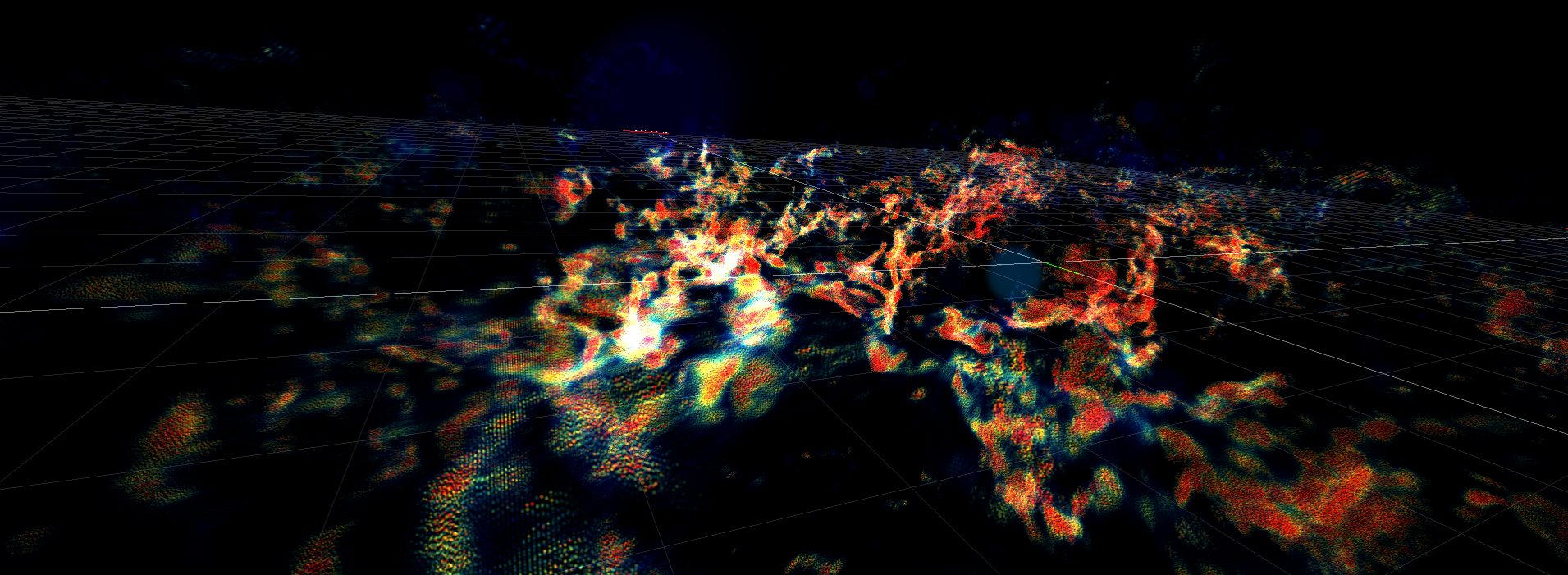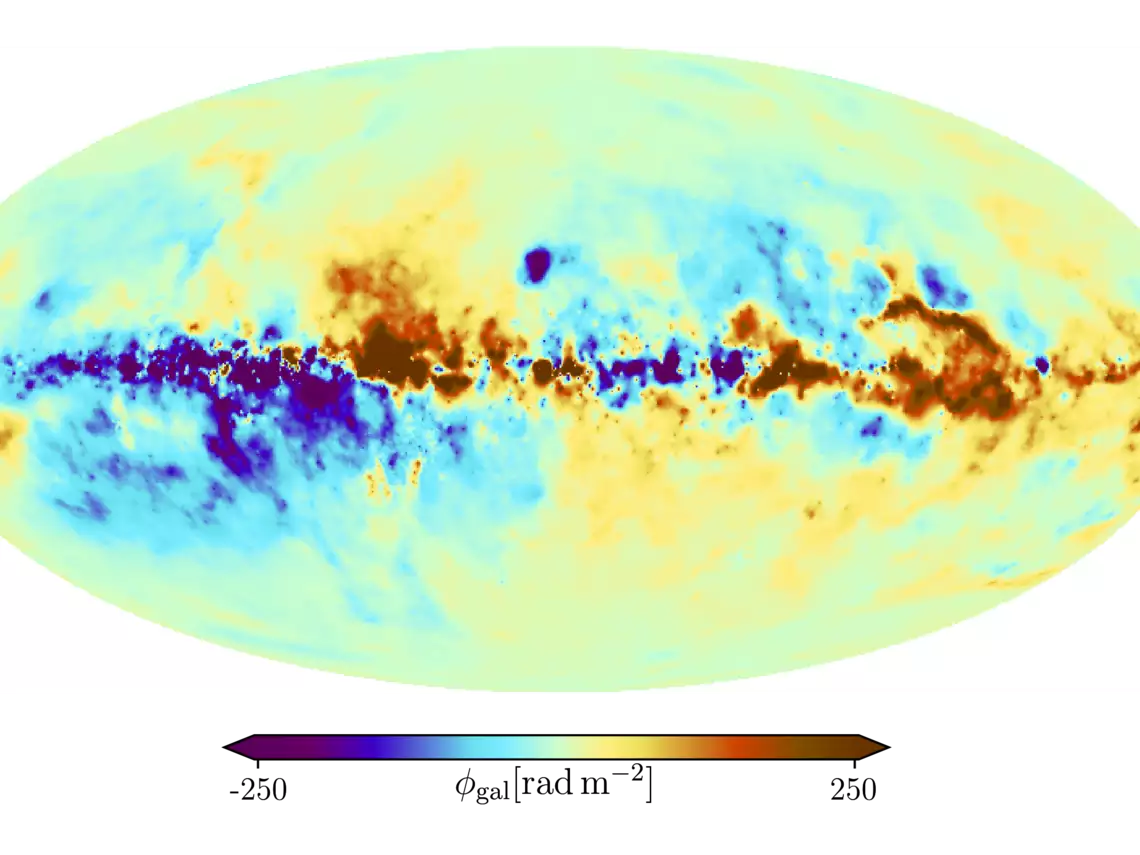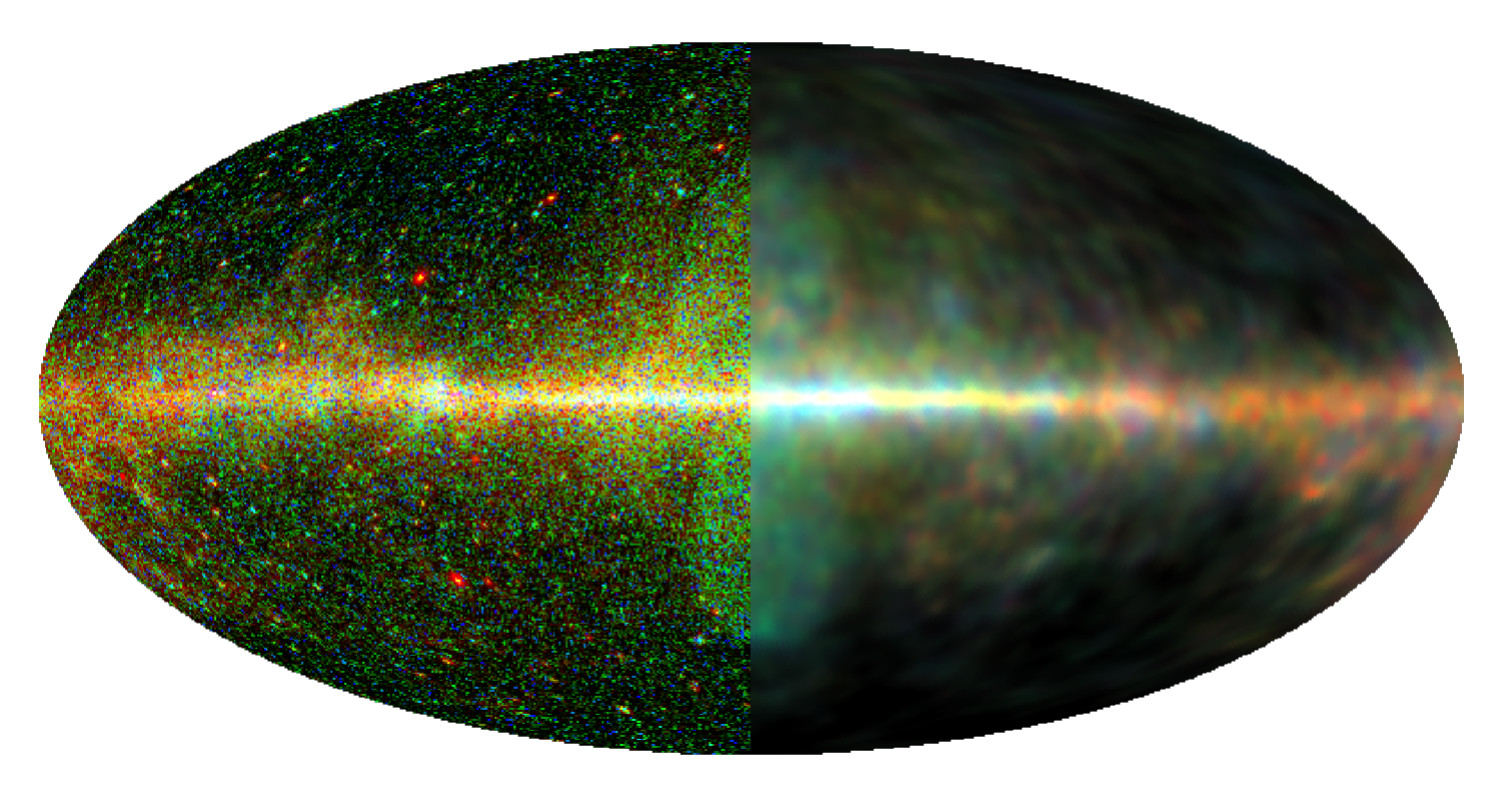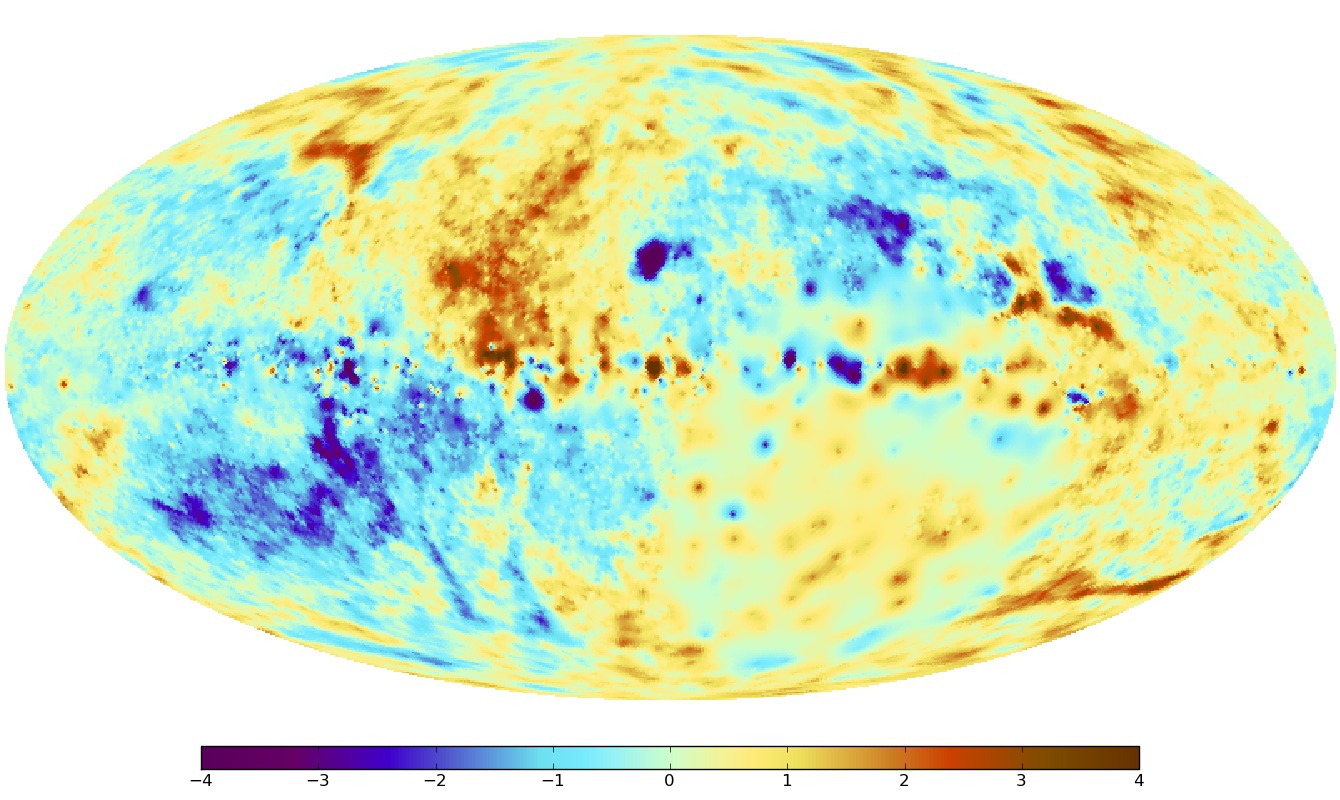Galactic Cartography
Accurate maps of the Milky Way in all its spatial, spectral and other dimensions are required for precision astrophysics. Here a collection of reconstructions of various galactic components in 2D and 3D are provided, which were obtained with information field theory.
Highlights
The Galactic Cartography Portal

The aim of the Galactic Cartography Portal is to host 3D reconstructions of the Milky Way's ISM, which were generated using information field theory methods. This portal allows the interactive visual exploration of the hosted maps.
Our Neighborhood in the Milky Way in 3D

High-resolution three-dimensional maps of the Milky Way have previously been limited to the immediate vicinity of the Sun. In a collaboration led by the Max Planck Institute for Astrophysics with researchers from Harvard, the Space Telescope Science Institute, and the University of Toronto, we were now able to build a high-resolution map of the Milky Way in 3D out to more than 4,000 light-years. The produced 3D map will be highly useful for a wide range of applications from star formation to cosmological foreground correction.
- Learn more
Inner view of the Milky Way’s magnetic field shows spiral structure

Magnetic fields of spiral galaxies usually show spiral structures themselves. For our own galaxy, this could not be confirmed so far due to our unfavorable inner perspective. Researchers at the Max Planck Institute for Astrophysics have now shown that the local galactic magnetic field is indeed aligned with the local Orion spiral arm of the Milky Way, as expected for a spiral galaxy.
Galactic anatomy with gamma rays

The anatomy of the Milky Way as seen in gamma light is full of mysteries. For example, there are gigantic bubbles of unknown origin above and below the center of the Milky Way that emit a lot of this high-energy radiation. A new method for imaging, developed at the Max Planck Institute for Astrophysics, now divided the Galactic gamma-radiation into three fundamental components: radiation from point sources, radiation from reactions of energetic protons with dense cold gas clouds, and radiation from electrons scattering light in the thin, hot, Galactic gas. The anatomic insights gained unravel some Galactic mysteries. Thus, it appears that the gamma-ray bubbles are simply outflows of ordinary, hot gas from the central region of the Milky Way.
New all-sky map shows the magnetic fields of the Milky Way with the highest precision

With a unique new all-sky map, scientists at MPA have made significant progress toward measuring the magnetic field structure of the Milky Way in unprecedented detail. Specifically, the map is of a quantity known as Faraday depth, which among other things, depends strongly on the magnetic fields along a particular line of sight. To produce the map, data were combined from more than 41,000 individual measurements using a novel image reconstruction technique. The work was a collaboration between scientists at the Max Planck Institute for Astrophysics (MPA), who are specialists in the new discipline of information field theory, and a large international team of radio astronomers. The new map not only reveals the structure of the galactic magnetic field on large scales, but also small-scale features that provide information about urbulence in the galactic gas.
2D Maps
- Disentangling the Faraday rotation sky
Sebastian Hutschenreuter, Marijke Haverkorn, Philipp Frank, Nergis C. Raycheva, Torsten A. Enßlin A. (2023), arXiv:2304.12350 - Multi-Component Imaging of the Fermi Gamma-ray Sky in the Spatio-spectral Domain
Platz, Lukas I. ; Knollmüller, Jakob ; Arras, Philipp ; Frank, Philipp ; Reinecke, Martin ; Jüstel, Dominik ; Enßlin, Torsten A. (2022), arXiv:2204.09360 - The Galactic Faraday rotation sky 2020
Sebastian Hutschenreuter et al. (2021), arXiv:2102.01709 - Bayesian decomposition of the Galactic multi-frequency sky using probabilistic autoencoders
Sara Milosevic, Philipp Frank, Reimar H. Leike, Ancla Müller, Torsten A. Enßlin, A&A, 650, A100 arXiv:2009.06608 - Sharpening up Galactic all-sky maps with complementary data. A machine learning approach
Ancla Müller, Moritz Hackstein, Maksim Greiner, Philipp Frank, Dominik J. Bomans, Ralf-Jürgen Dettmar, Torsten A. Enßlin, (2018) Astronomy & Astrophysics, Volume 620, id.A64, 20 pp. doi:10.1051/0004-6361/201833604 - The Galactic Faraday depth sky revisited
Sebastian Hutschenreuter, Torsten A. Enßlin, Astronomy & Astrophysics, Volume 633, id.A150, 16 pp.d eJournal, arXiv:1903.06735 - The Denoised, Deconvolved, and Decomposed Fermi gamma-ray Sky - An Application of the D3PO Algorithm
Marco Selig, Valentina Vacca, Niels Oppermann, Torsten A. Enßlin, A&A 581, A126 (2015) arXiv:1410.4562 data - Information Field Theory with INTEGRAL/SPI data
Mahsa Ghaempanah, Dissertation, LMU München: Faculty of Physics (2017) thesis
3D Maps
Laurin Söding, Gordian Edenhofer, Torsten A. Enßlin, Philipp Frank, Ralf Kissmann, Vo Hong Minh Phan, Andrés Ramírez, Hanieh Zhandinejad, Philipp Mertsch, (2024), submitted arxiv:2407.02859
- A Parsec-Scale Galactic 3D Dust Map out to 1.25 kpc from the Sun
Gordian Edenhofer, Catherine Zucker, Philipp Frank, Andrew K. Saydjari, Joshua S. Speagle, Douglas Finkbeiner, and Torsten A. Enßlin, submitted, arXiv:2308.01295 - The Galactic Cartography Portal
Reimar H. Leike, Gordian Edenhofer, Jakob Knollmüller, Christian Alig, Torsten A. Enßlin (2022), - The Galactic 3D large-scale dust distribution via Gaussian process regression on spherical coordinates
Reimar H. Leike, Gordian Edenhofer, Jakob Knollmüller, Christian Alig, Philipp Frank, Torsten A. Enßlin (2022), submitted, arXiv:2004.06732 - Resolving nearby dust clouds
Reimar H. Leike, Martin Glatze, Torsten A. Enßlin (2020), Astronomy & Astrophysics, Volume 639, A138, 10.1051/0004-6361/202038169, arXiv:2004.06732 - Charting nearby dust clouds using Gaia data only
Reimar Leike, Torsten A. Enßlin, A&A 631, A32 (2019); doi:10.1051/0004-6361/201935093; arXiv:1901.05971 - Tomography of the Galactic free electron density with the Square Kilometer Array
Maksim Greiner, Dominic Schnitzeler, Torsten A. Enßlin, A&A 590, A59 (2016) arXiv:1512.03480